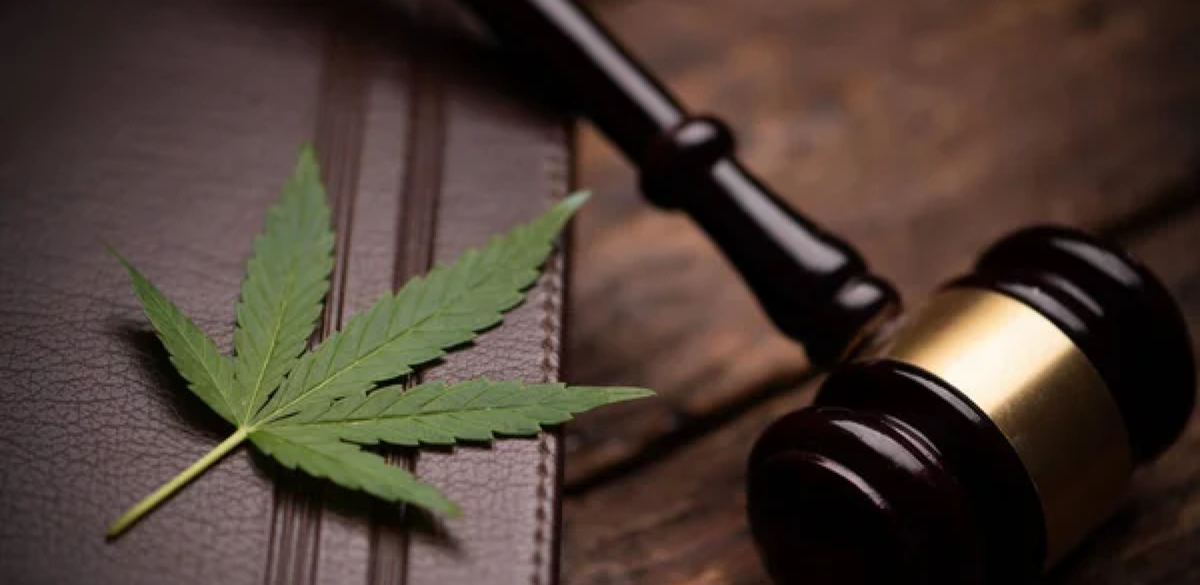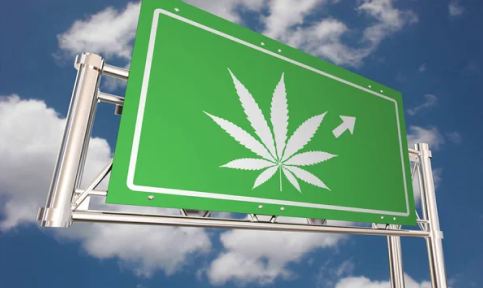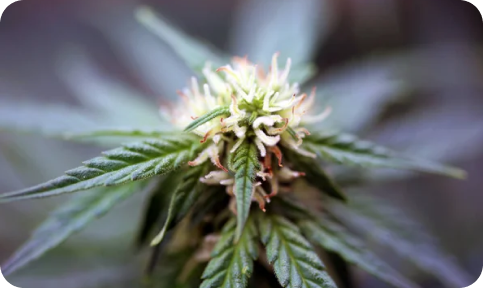Decriminalization vs. Legalization: Understanding the Differences in Cannabis Laws

November 06, 2024
I. Introduction
In recent years, the world has seen a significant shift in attitudes toward cannabis and its regulatory policies. Two terms that often come up in these discussions are “decriminalization” and “legalization.” Although they are sometimes used interchangeably, these concepts differ substantially, and understanding the nuances is essential for forming an informed opinion on cannabis policy.
A. Relevance of the Topic in Today’s Context
1. Global Trends:
– An increasing number of countries are reevaluating their cannabis laws.
– Growing public support for drug policy reforms.
2. Medical Aspects:
– Recognition of the potential therapeutic properties of cannabis.
– The need for a balance between access to treatment and drug control.
3. Socio-Economic Factors:
– High costs associated with law enforcement focused on cannabis prohibition.
– The potential for new legal industries and tax revenue generation.
B. Brief Overview of Key Concepts: Decriminalization and Legalization
1. Decriminalization:
– Reduces or eliminates criminal penalties for the possession of small amounts of cannabis for personal use.
– Typically does not involve the creation of a legal market.
2. Legalization:
– Completely lifts the ban on the production, sale and use of cannabis.
– Often includes the establishment of a regulated market.
Understanding the differences between these approaches is critical for assessing their potential impact on society, health care, and the legal system.
II. Definitions and Key Concepts
To fully grasp the differences between decriminalization and legalization, it’s important to clearly define these terms and examine their key characteristics.
A. Decriminalization: Definition and Key Characteristics
1. Definition:
– Decriminalization refers to the removal of criminal penalties for certain actions—in this case, the possession and use of small amounts of cannabis for personal use.
2. Key Characteristics:
– No criminal prosecution for possession of small amounts.
– Criminal penalties are replaced with fines or warnings.
– Production and distribution remain illegal.
– No legal cannabis market is created.
B. Legalization: Definition and Key Characteristics
1. Definition:
Legalization means removing legislative prohibitions on the production, sale, and use of cannabis, as well as the legal frameworks regulating these activities.
2. Key Characteristics:
– Complete abolition of criminal penalties for the possession, use and, as a rule, the production and sale of cannabis.
– Establishment of a regulated market with licensed producers and sellers.
– Age restrictions for purchasing and using cannabis.
– Implementation of quality and safety standards.
– Taxation of cannabis sales.
C. Key Differences Between the Two Approaches
1. Legal Status:
– Decriminalization: cannabis remains illegal, but personal use is not criminalized.
– Legalization: cannabis becomes a legal substance with a regulated market.
2. Production and Distribution:
– Decriminalization: production and distribution remain illegal and are punishable.
– Legalization: allowed within established rules and regulations.
3. Availability:
– Decriminalization: legal points of sale are not created.
– Legalization: a legal infrastructure for cannabis sales is established.
4. Quality Control:
– Decriminalization: there are no mechanisms to ensure product quality.
– Legalization: quality and safety standards are introduced.
5. Economic Aspects:
– Decriminalization: limited economic impact.
– Legalization: to create a new legal industry and generate tax revenue.
Understanding these key differences is crucial for evaluating their potential effects on society and shaping effective cannabis policy.
III. Cannabis Decriminalization
Decriminalization is an approach that reduces criminal liability for possessing and using small amounts of cannabis, while maintaining the overall prohibition on production and distribution.
A. Key Principles of Decriminalization
1. Reduction of Penalties:
– Replacing criminal prosecution with administrative measures.
– Focusing on reducing the social harm caused by criminalizing users.
2. Maintaining the Overall Ban:
– Cannabis remains an illegal substance.
– Production and distribution are still punishable by law.
3. Focus on Public Health:
– Shifting from punishment to prevention and treatment.
– Viewing cannabis use as a public health issue rather than a criminal justice problem.
B. Typical Measures in Decriminalization
1. Administrative Fines:
– Replacement of criminal penalties with monetary fines.
– Typically applied for possession of small amounts for personal use.
2. Referral to Treatment or Counseling:
– Offering treatment programs instead of punishment.
– Focusing on harm reduction and prevention.
3. Warnings:
– Issuing official warnings instead of arrests or criminal prosecution.
4. Confiscation Without Further Penalties:
– Seizure of cannabis without applying further punitive measures.
Understanding these principles and measures highlights how decriminalization seeks to reduce the burden on the criminal justice system while maintaining the prohibition on the production and sale of cannabis.
C. Examples of Countries Practicing Decriminalization
1. Portugal (2001):
– Decriminalized all drugs, including cannabis.
– Replaced criminal penalties with administrative measures and referrals to treatment.
2. Netherlands:
– “Tolerance” policy toward small quantities of cannabis.
– Cannabis sold in “coffee shops” under controlled conditions.
3. Czech Republic (2010):
– Decriminalized possession of small amounts of various drugs, including cannabis.
– Administrative fines for personal use possession.
D. Pros and Cons of Decriminalization
Pros:
1. Reduces the burden on the criminal justice system.
2. Decreases social stigmatization of users.
3. Allows resources to be redirected toward treatment and prevention.
4. Mitigates the negative consequences of criminal records on individuals’ lives.
Cons:
1. Maintains the illegal market and associated crime.
2. Lacks quality control over the product.
3. May conflict with international drug conventions.
4. Potential increase in use due to decreased perceived risk.
IV. Cannabis Legalization
Legalization is a more radical approach that removes the ban on cannabis entirely and creates a regulated, legal market.
A. Key Principles of Legalization
1. Full Removal of Prohibition:
– Criminal penalties for possession, use, and production or sale are removed.
– Legal frameworks are created to regulate the entire cannabis market.
2. Market Regulation:
– Establishment of rules for production, distribution and sale.
– Licensing systems for producers and sellers.
3. Quality and Safety Control:
– Standards for product quality are implemented.
– Regulation of active ingredient content (THC, CBD).
4. Taxation:
– Special taxes on cannabis production and sales.
– Tax revenue is used to fund health and education programs.
B. Different Models of Legalization
1. Medical Legalization:
– Cannabis use permitted only for medical purposes.
– Strict control and prescription-based access.
2. Recreational Legalization:
– Cannabis use is permitted for personal use.
– A regulated market similar to alcohol or tobacco.
3. Mixed Model:
– Legalization of both medical and recreational use.
– Different rules for medical and recreational markets.
C. Examples of Countries that Have Legalized Cannabis
1. Canada (2018):
– Full legalization of recreational use.
– Federal regulation of production, provincial regulation of sales.
2. Uruguay (2013):
– The first country to fully legalize cannabis.
– State control over production and distribution.
3. Certain U.S. States (e.g., Colorado, California):
– Legalization at the state level despite the federal prohibition.
– Different regulatory models across states.
D. Pros and Cons of Legalization
Pros:
1. Eliminates the black market and the crime associated with it.
2. Allows for quality and safety control of products.
3. Generates significant tax revenue.
4. Creates jobs and a legal industry.
5. Provides the opportunity to regulate access and consumption.
Cons:
1. Potential increase in use, especially among youth.
2. Challenges in regulating and controlling a new legal market.
3. Conflicts with international drug conventions.
4. Potential public health risks if not properly regulated.
Understanding these aspects of cannabis decriminalization and legalization is crucial for assessing their societal impact and shaping effective drug regulation policies.
C. Economic Aspects
1. Decriminalization:
– Saves money on law enforcement and the judicial system.
– Does not create significant new revenue streams for the government.
– Maintains the existence of the illegal market.
2. Legalization:
– Creates a new legal industry with potential for economic growth.
– Generates significant tax revenue.
– Can lead to the creation of new jobs and the development of related industries.
D. Impact on Public Health
1. Decriminalization:
– May facilitate access to treatment for dependent individuals.
– Does not solve the issue of product quality control.
– Allows resources to be redirected toward prevention and treatment.
2. Legalization:
– Ensures product quality and safety control.
– Allows for more open research into the medical applications of cannabis.
– May increase availability and potentially lead to higher usage rates.
V. Practical Aspects of Implementation
The implementation of both decriminalization and legalization involves a number of practical challenges and requires careful planning.
A. Challenges in Implementing Decriminalization
1. Defining Threshold Quantities:
– Setting clear criteria to distinguish between personal use and distribution.
– Ensuring consistent application of these criteria by law enforcement.
2. Training Law Enforcement:
– Redirecting police focus from arrests to administrative measures.
– Developing new protocols for interacting with cannabis users.
3. Creating a System of Administrative Penalties:
– Developing an effective system of fines or alternative measures.
– Providing mechanisms to refer users for treatment or counselling.
B. Challenges in Implementing Legalization
1. Developing a Regulatory Framework:
– Creating a comprehensive set of rules for production, distribution, and sales.
– Establishing standards for product quality and safety.
2. Licensing and Oversight:
– Developing a licensing system for producers and sellers.
– Creating mechanisms for monitoring and enforcing compliance with the rules.
3. Taxation:
– Determination of optimal tax rates.
– Creation of a system for collecting and allocating tax revenue.
4. Public Health:
– Development of programs for prevention and treatment of addiction.
– Conducting public awareness campaigns on the risks of use.
C. Role of Law Enforcement
1. In Decriminalization:
– Focusing on administrative measures instead of criminal prosecution.
– Prioritizing the fight against large-scale production and distribution.
2. In Legalization:
– Enforcing new rules and restrictions (age limits, licenses, etc.).
– Combating the illegal market that competes with the legal one.
D. Regulation and Control
1. Market Monitoring:
– Tracking trends in use and production.
– Analyzing the impact of new policies on public health and safety.
2. Policy Adaptation:
– Flexibility in adjusting rules based on experience.
– Ongoing engagement with stakeholders to improve regulation.
3. International Cooperation:
– Coordinating policies with neighboring countries and international partners.
– Participating in global discussions on drug policy.
Both decriminalization and legalization require a comprehensive approach, considering legal, social, economic, and health factors. Successful implementation of either policy depends on careful planning, flexibility in adapting to new conditions, and continuous monitoring of the outcomes.
VI. International Context
The issues of decriminalization and legalization of cannabis are not limited to national borders and have an important international dimension.
A. Impact of International Drug Conventions
1. Single Convention on Narcotic Drugs (1961):
– Classifies cannabis as a narcotic drug subject to strict control.
– Limits the use of cannabis to medical and scientific purposes.
2. Convention on Psychotropic Substances (1971):
– Includes THC (the main psychoactive component of cannabis) in the list of controlled substances.
3. 1988 UN Convention Against Illicit Traffic in Narcotic Drugs:
– Requires countries to criminalize the possession of drugs, including cannabis, for personal use.
B. Differences in Approaches by Various Countries
1. Strict Prohibition:
– Many countries in Asia and the Middle East maintain harsh penalties for any cannabis use.
– Example: Singapore, where possession of small amounts of cannabis can result in long prison sentences.
2. Decriminalization:
– Several European countries have decriminalized possession of small amounts of cannabis.
– Example: Portugal, where the decriminalization of all drugs has led to a reduction in drug-related problems.
3. Medical Legalization:
– Many countries have legalized cannabis for medical purposes.
– Example: Germany, where patients can obtain cannabis with a doctor’s prescription.
4. Full Legalization:
– A small, but growing number of countries have fully legalized cannabis.
– Example: Canada, where cannabis is legal for both medical and recreational use.
C. Trends in Global Cannabis Policy
1. Softening of the UN Position:
– In 2020, the UN Commission on Narcotic Drugs removed cannabis from Schedule IV (the most dangerous substances) of the 1961 Single Convention.
– Growing recognition of the medical value of cannabis at the international level.
2. Regional Initiatives:
– European Union: discussions on harmonization of cannabis laws among member states.
– Latin America: a growing movement to rethink drug policies.
3. Impact of Legalization in Certain Countries:
– The experience of countries that have legalized cannabis is being closely studied by the international community.
– Potential influence on future changes in international conventions.
VII. Public Opinion and Debate
Public opinion plays a key role in shaping cannabis policy and influences decisions regarding decriminalization or legalization.
A. Arguments of Decriminalization Supporters
1. Reducing Social Harm:
– Reducing the number of arrests and convictions for minor offenses.
– Decreasing the burden on the criminal justice system.
2. Focus on Health:
– Redirecting resources from punishment to treatment and prevention.
– Reducing the stigma around users and improving access to healthcare.
3. Pragmatic Approach:
– Acknowledging the ineffectiveness of strict prohibition.
– A more humane approach to users while maintaining the overall ban.
B. Arguments of Legalization Supporters
1. Economic Benefits:
– Creating a new legal industry and jobs.
– Increasing tax revenue.
2. Quality Control and Safety:
– Regulating production and sales to ensure consumer safety.
– Reducing risks associated with contaminants in illegal products.
3. Elimination of the Black Market:
– Redirecting funds from criminal enterprises to legitimate businesses.
– Reducing crime and violence associated with illegal drug trade.
C. Economic Aspects
1. Decriminalization:
– Reduces costs for law enforcement and the judicial system.
– Does not create significant new revenue sources for the state.
– Maintains the existence of an illegal market.
2. Legalization:
– Establishes a new legal industry with potential for economic growth.
– Generates significant tax revenues.
– Can lead to the creation of new jobs and the development of related industries.
D. Impact on Public Health
1. Decriminalization:
– May facilitate access to treatment for dependent individuals.
– Does not resolve the issue of product quality control.
– Allows resources to be redirected toward prevention and treatment.
2. Legalization:
– Ensures control over product quality and safety.
– Allows more open research into the medical applications of cannabis.
– May lead to increased availability and potentially higher rates of use.
3. Reducing Crime Related to the Illegal Trade:
– Reducing the influence of organized crime.
4. Personal Freedom:
– Arguments for the right of adults to make personal choices.
– Comparisons with the regulation of alcohol and tobacco.
C. Opponents of Cannabis Law Reform
1. Public Health Concerns:
– Risks of increased use, particularly among young people.
– Potential long-term health consequences.
2. Moral and Social Arguments:
– Belief that drug use is morally unacceptable.
– Concerns about negative impacts on societal values.
3. Safety Issues:
– Fears of increased incidents of driving under the influence of cannabis.
– Potential risks in the workplace.
D. Role of Media and Public Organizations
1. Media Influence:
– Shaping public opinion through coverage in the media.
– The role of social media in spreading information and driving debates.
2. Activism and Lobbying:
– Activities of organizations advocating for cannabis law reform.
– Resistance from groups supporting strict prohibition.
3. Educational Initiatives:
– The role of public organizations in educating the public about the risks and benefits of different approaches.
– The importance of science-based information in public debates.
Understanding the international context and the dynamics of public opinion is pivotal for developing effective and balanced cannabis policies. Debates on decriminalization and legalization continue to evolve, reflecting changes in scientific understanding, social norms, and political priorities.
Other Laws

I. Introduction In recent years, we have witnessed rapid changes in the global attitude toward medical marijuana. The legalization of this once-banned plant opens new horizons not only for patients, but also for investors eager to benefit from a growing industry. A. Overview of the Current State of Medical Marijuana Legalization Worldwide As of 2024, […]

I. Introduction Marijuana has been used for medicinal purposes for thousands of years, but it is only in recent decades that we have seen significant legislative changes regulating its use. This evolution reflects a complex interaction between science, politics, and public opinion. A. A Brief Historical Overview of Marijuana Use in Medicine The use of […]

